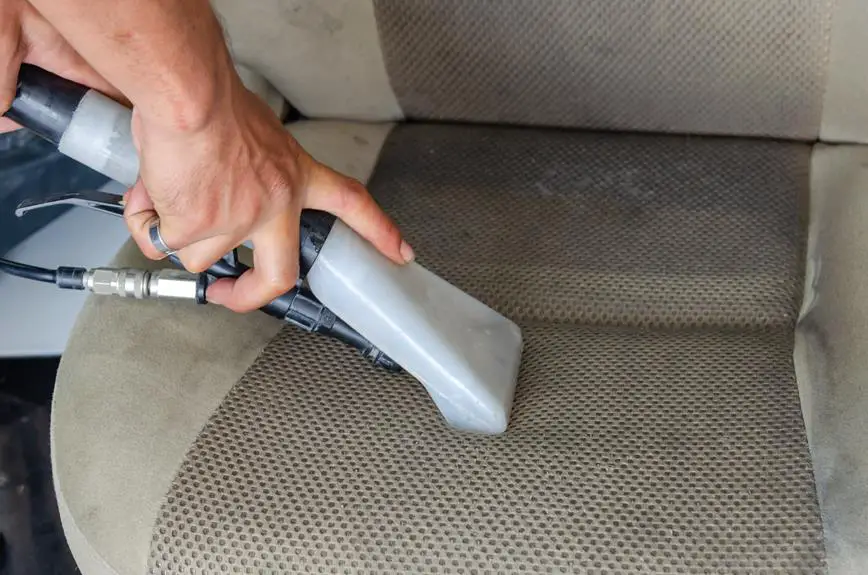Are you pondering the practicality of purchasing pricey fabrics? Is the expense worth the effort? The allure of luxurious textiles is undeniable, but the maintenance they require may give you pause.
Delving into the depths of this dilemma, we will explore the intricacies of upkeep, the endurance of opulent materials, and the alternatives at your disposal. By analyzing the cost, care, and longevity of high-end fabrics, you can make an informed decision that aligns with your mastery of style and substance.
Let's embark on a thoughtful exploration to determine if the splendor of expensive fabric is truly worth the maintenance it demands.
Key Takeaways
- Expensive fabric offers a luxurious feel, durability, and elevates the aesthetic of clothing and home furnishings.
- Proper maintenance and care can preserve the quality and extend the lifespan of expensive fabric.
- Understanding the maintenance requirements and weighing the investment in expensive fabric against maintenance is crucial.
- High-quality synthetic fabrics can be cost-effective alternatives to expensive fabric, as they require less maintenance and are more resistant to stains, wrinkles, and fading.
The Appeal of Expensive Fabric
The appeal of expensive fabric lies in its luxurious feel and durability, making it a worthwhile investment for those who appreciate quality and long-lasting products. Luxury fabrics such as silk, cashmere, and high-quality cotton are sought after for their superior texture and elegant drape. The allure of these fabrics is undeniable, as they not only elevate the aesthetic of clothing and home furnishings but also provide a sense of indulgence and sophistication.
When considering luxury fabrics, it's essential to weigh the cost benefit analysis. While these fabrics may come with a higher price tag, their durability often offsets the initial investment. Care considerations also play a significant role in the appeal of expensive fabric. Proper maintenance, such as dry cleaning or hand washing, can help preserve the fabric's quality and extend its lifespan, adding to the overall value and justifying the initial cost.
Maintenance Requirements of High-end Fabrics
When considering high-end fabrics, it's important to weigh the cost against the longevity and durability of the material.
Additionally, special care considerations, such as dry cleaning or specific washing instructions, should be factored into the maintenance requirements.
These points will help you make an informed decision about whether the investment in expensive fabric is worth the maintenance.
Cost Vs. Longevity
Considering the cost of high-end fabrics, you'll want to understand their maintenance requirements for long-term durability. While expensive fabrics may require more care, the cost benefits often outweigh the initial investment.
High-end fabrics like silk, wool, and cashmere are known for their longevity when properly maintained. With the right care, these fabrics can last for many years, making them a worthwhile investment. Regular maintenance, such as dry cleaning or gentle hand washing, can help extend the fabric lifespan, ensuring that your expensive purchase remains in pristine condition.
Additionally, proper storage and handling can also contribute to the longevity of high-end fabrics. By understanding and following the maintenance requirements, you can maximize the lifespan of your expensive fabric, ultimately making it a cost-effective choice in the long run.
Special Care Considerations
To properly maintain high-end fabrics, follow specific care instructions to ensure their longevity and pristine condition.
High-end fabrics often require specialized cleaning methods to preserve their quality. Delicate handling is essential to prevent damage or premature wear. Always refer to the garment's care label for precise instructions, as different fabrics may have unique maintenance requirements.
For instance, silk may need to be dry cleaned to avoid shrinking or distortion, while cashmere may require gentle hand washing to maintain its softness. Additionally, certain fabrics like velvet or satin may be prone to water spots or crushing, necessitating careful attention during cleaning and storage.
Cost of Upkeep for Luxurious Materials
Maintaining luxurious materials can be a significant investment in terms of time and money. While the allure of exquisite fabrics is undeniable, the upkeep costs and fabric longevity are crucial factors to consider. The table below provides a comparison of the average annual upkeep costs and the expected longevity for common luxurious materials.
| Material | Upkeep Costs (per year) | Longevity (years) |
|---|---|---|
| Silk | $500 | 15-20 |
| Cashmere | $300 | 10-15 |
| Velvet | $400 | 15-20 |
As you can see, the annual upkeep costs for these materials can add up over time. However, the longevity of these fabrics often justifies the investment. It's essential to weigh the initial cost of the material against the long-term upkeep expenses to determine if it aligns with your lifestyle and budget. Understanding the cost of upkeep for luxurious materials allows you to make informed decisions when investing in high-end fabrics.
Longevity and Durability of Expensive Fabrics
When evaluating expensive fabrics for their worth, you need to consider the longevity and durability as crucial factors in your decision-making process.
The longevity assessment of a fabric is essential in determining whether it's a worthwhile fabric investment. Expensive fabrics often come with a higher initial cost, but their durability can make them a more cost-effective choice in the long run. Fabrics such as high-quality wool, silk, and linen are known for their longevity, provided they're cared for properly.
Their durability allows them to withstand regular wear and tear, making them a sustainable option for long-term use. Additionally, these fabrics often maintain their appearance and quality over time, reducing the need for frequent replacements, which can result in overall cost savings.
When considering the value of expensive fabrics, it's important to weigh the initial investment against the potential for long-lasting use. Taking into account the longevity and durability of expensive fabrics can lead to a more informed and practical purchasing decision.
Alternatives to Expensive Fabrics
Consider using a few high-quality synthetic fabrics as cost-effective alternatives to expensive natural fabrics when weighing durability and maintenance costs. Eco-friendly options such as recycled polyester, nylon, and acrylic offer budget-friendly alternatives that mimic the look and feel of natural fabrics. These synthetic fabrics are often more resistant to stains, wrinkles, and fading, making them durable choices for everyday wear. Additionally, they generally require less maintenance and are easier to care for, saving you time and money in the long run.
Recycled polyester, made from post-consumer plastic bottles, is an eco-conscious choice that reduces environmental impact. This fabric is known for its moisture-wicking and quick-drying properties, making it an ideal alternative to expensive natural fibers like silk or cashmere.
Nylon, another synthetic option, is lightweight, strong, and resistant to abrasion, making it suitable for activewear and outdoor gear.
Acrylic, a synthetic alternative to wool, offers warmth and softness at a fraction of the cost.
These high-quality synthetic fabrics not only provide budget-friendly alternatives to expensive natural fabrics but also contribute to sustainable fashion practices. When considering the maintenance and longevity of fabrics, exploring these eco-friendly and cost-effective options can be a practical choice.
Making an Informed Decision
When considering whether expensive fabric is worth the maintenance, it's essential to weigh the balance between cost and upkeep.
Quality should be prioritized over convenience, and it's crucial to evaluate the long-term investment potential of the fabric.
Making an informed decision involves carefully considering these points to ensure that you're making a choice that aligns with your priorities and values.
Cost Vs. Upkeep Balance
Before purchasing expensive fabric, you should carefully weigh the cost versus the upkeep to make an informed decision. Consider the long-term benefits of fabric durability against the initial investment.
Expensive fabrics often offer superior durability, requiring less frequent replacement, which can offset the initial cost over time. However, it's crucial to factor in upkeep expenses such as dry cleaning, special washing instructions, and potential repairs. Evaluate whether the cost of maintenance aligns with your lifestyle and budget.
Additionally, compare the upkeep requirements of expensive fabric with more affordable alternatives. Analyzing the cost versus upkeep balance empowers you to make a well-informed decision that aligns with your priorities.
Quality Over Convenience
Assessing whether the quality of expensive fabric outweighs the convenience of more affordable alternatives requires careful consideration of your lifestyle and long-term priorities.
When making an informed decision about fabric choices, it's essential to weigh the following factors:
- Quality: Determine if the durability and luxurious feel of expensive fabric justify the initial investment.
- Convenience: Consider the ease of care and maintenance, as well as the time and effort required for upkeep.
- Affordability: Evaluate the long-term cost-effectiveness and whether the initial expense aligns with your budget.
- Practicality: Reflect on how the fabric aligns with your daily activities and if it meets your functional needs.
- Long-term benefits: Consider the potential longevity and timeless appeal of high-quality fabric versus the convenience of more affordable options.
Long-Term Investment Evaluation
Considering your lifestyle and priorities, a thoughtful evaluation of the long-term investment potential of expensive fabric is crucial in making an informed decision.
When assessing the long-term investment aspect, consider the durability and timeless appeal of the fabric. High-quality materials often withstand the test of time, making them a sound long-term investment.
Additionally, the cost of maintenance should be factored in. While expensive fabrics may require specific care, the long-term benefits often outweigh the maintenance costs. Understanding the fabric care requirements and being willing to invest time and resources into proper maintenance can significantly impact the fabric's longevity.
Ultimately, by carefully evaluating the long-term investment potential and considering the fabric care demands, you can make an informed decision on whether expensive fabric aligns with your long-term priorities.
Frequently Asked Questions
What Are Some Common Misconceptions About the Maintenance of Expensive Fabrics?
You might believe that expensive fabrics are high-maintenance. In reality, misconceptions about fabric durability exist. Cleaning frequency and proper care techniques can significantly impact the longevity of expensive fabrics, debunking common maintenance myths.
Are There Any Specific Cleaning Products or Methods That Are Recommended for High-End Fabrics?
For high-end fabrics, recommended cleaning products and professional cleaning services are crucial. Fabric protection and stain removal are key considerations. Using the right products and methods ensures longevity and maintains the fabric's luxurious appearance.
How Do the Maintenance Requirements of Different Expensive Fabrics Compare to Each Other?
Comparing silk and cashmere maintenance, it's essential to understand the proper care for delicate fabrics. Silk requires gentle hand washing and air drying, while cashmere needs to be dry cleaned to maintain its softness and shape.
Are There Any Special Considerations for Storing Expensive Fabrics to Maintain Their Quality?
Proper storage is crucial for fabric protection. Ensure a cool, dry environment to prevent mold and mildew. Use acid-free tissue to wrap and store fabrics. Avoid direct sunlight to prevent fading. These practices maintain fabric quality.
What Are Some Tips for Extending the Longevity of Expensive Fabrics?
To maintain expensive fabrics, follow fabric care and preservation techniques. Store them in a cool, dry place, avoid direct sunlight, and handle with care when washing. By prioritizing maintenance, you can extend the longevity of your fabric.
- Is Chiffon a Lightweight? - April 23, 2024
- Is Chiffon Cool in Hot Weather? - April 23, 2024
- Is Pure Chiffon Costly? - April 23, 2024




